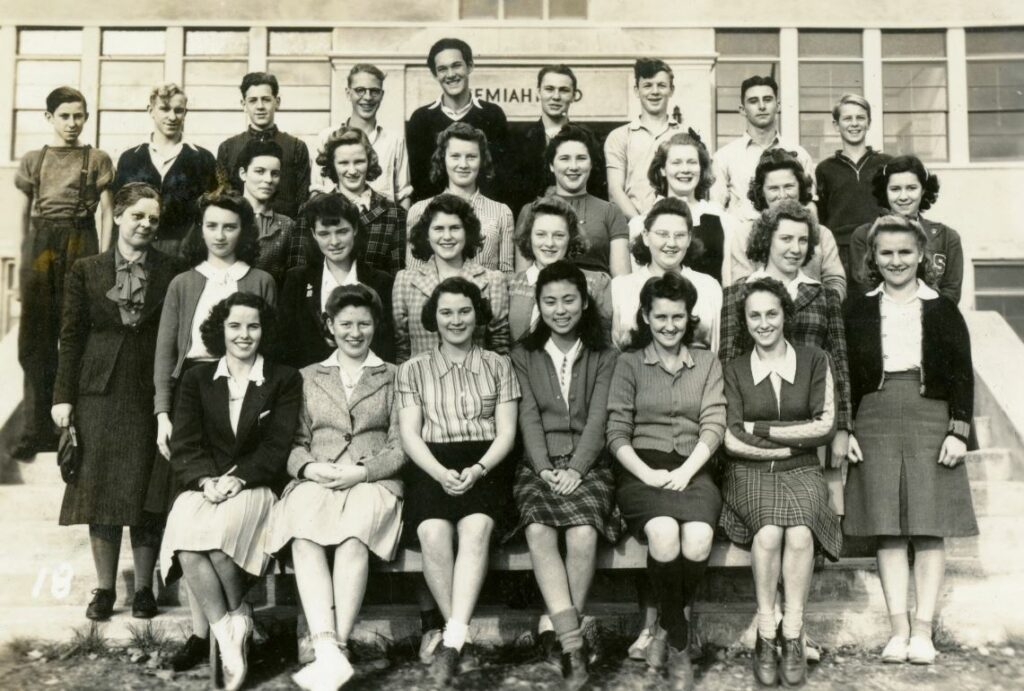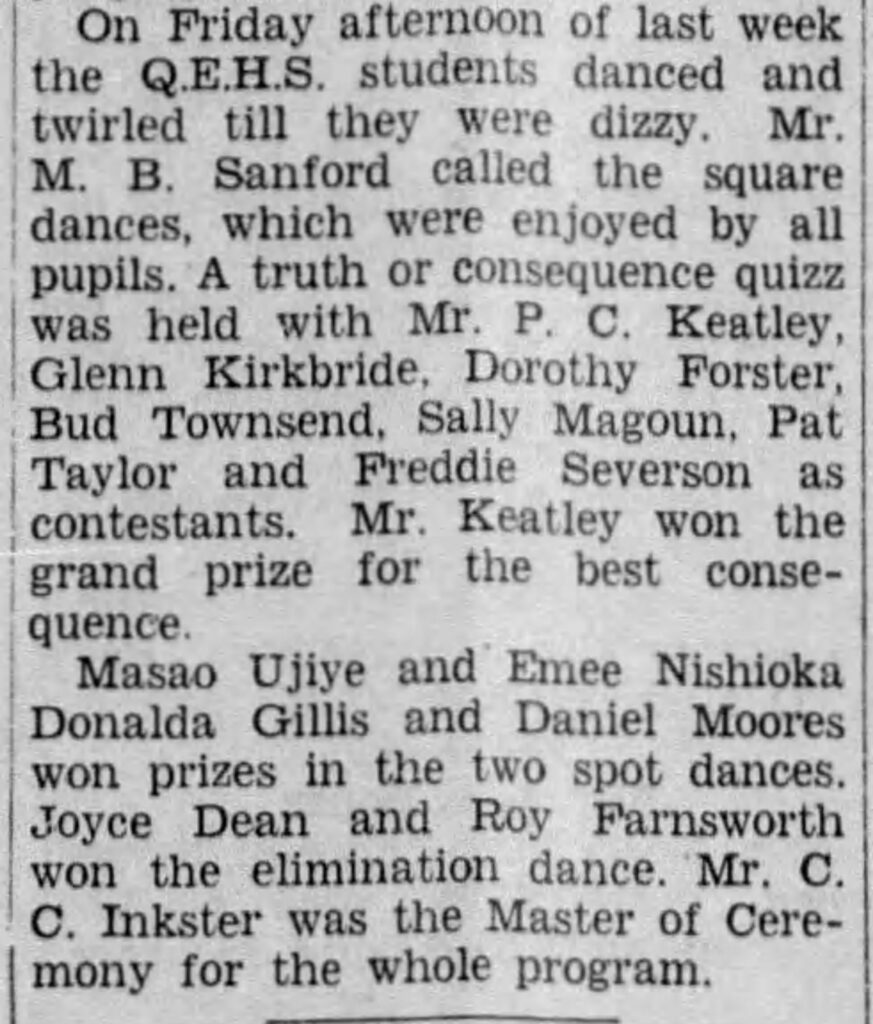Prior to the removal of those of Japanese descent came the removal of any cars, trucks, radios, cameras, and explosives from their possession. Additionally, a curfew was implemented. The racism from some British Columbians at this time is clear in the Surrey Leader. One reader wrote in to voice his opinion on home defense and argued that all Japanese students should be removed from elementary and high schools “because it is unfair to compel with [sic] white children to associate or mix with those of Japanese traitors who have abused every privilege given them including free education and citizenship of this country.”1
Farewell parties were hosted for many of the families prior to their removal, which for the Japanese families required permission to stay out past curfew. Dotty Karr, who had been a Surrey student, spoke years later of attending one of these parties and commented that everyone was attempting to put on a brave face, but that it was hard to act positive knowing that it was the end. She commented that there was a mixture of those in the community who were “nasty” to Japanese residents, while others regarded them as members of the community.2

Mike Honda’s sister, Mary Tetsuko Honda, is pictured here (front row centre).
Joan Parolin, who had been a student at Queen Elizabeth remembered a time when her and a few other students were on a radio quiz show, but this show was set to begin after curfew began. This curfew controlled the actions of adolescents as well as adults, so her classmate Sumi had to obtain special permission from the RCMP in order to go to her neighbour’s house and listen to the show, since she had already had her radio seized. Queen Elizabeth High School had many students of Japanese descent. Parolin remembered Queen Elizabeth deciding, as a school, to only hold dances in the afternoons rather than the evenings so long as there were still Japanese students.3
Other teenagers were not as welcome in the school community. Mike Honda, who was the only male Nisei (born in Canada to Japanese immigrants) at Semiahmoo High School, recalled being told after Pearl Harbor that he could no longer participate in cadet training. “They must have feared a thirteen-year old Rambo in the making,” he commented.4

Next Page → Removal of Japanese Students
References
- “Doings at Parliament.” The Surrey Leader (Surrey, BC, Canada), March 4, 1942. Accessed through Surrey Archives.; Letter to the editor from D. Gallen. The Surrey Leader (Surrey, BC, Canada), March 11, 1942. Accessed through Surrey Archives. ↩︎
- Dotty Karr Interview, 8 Aug. 1990. SMA90.21.15. Surrey Museum and Archives Oral History Collection. Surrey Archives, Surrey, BC, Canada. ↩︎
- Joan Parolin (nee Gillis) Interview, 8 Aug. 1990. SMA90.21.19. Surrey Museum and Archives Oral History Collection. Courtesy of Surrey Archives, Surrey, BC. Canada. ↩︎
- Michael S. Hoshiko. Who Was Who: Pioneer Japanese Families in Delta and Surrey. (M.S. Hoshiko, Edwardsville, IL, 1998). 92. ↩︎